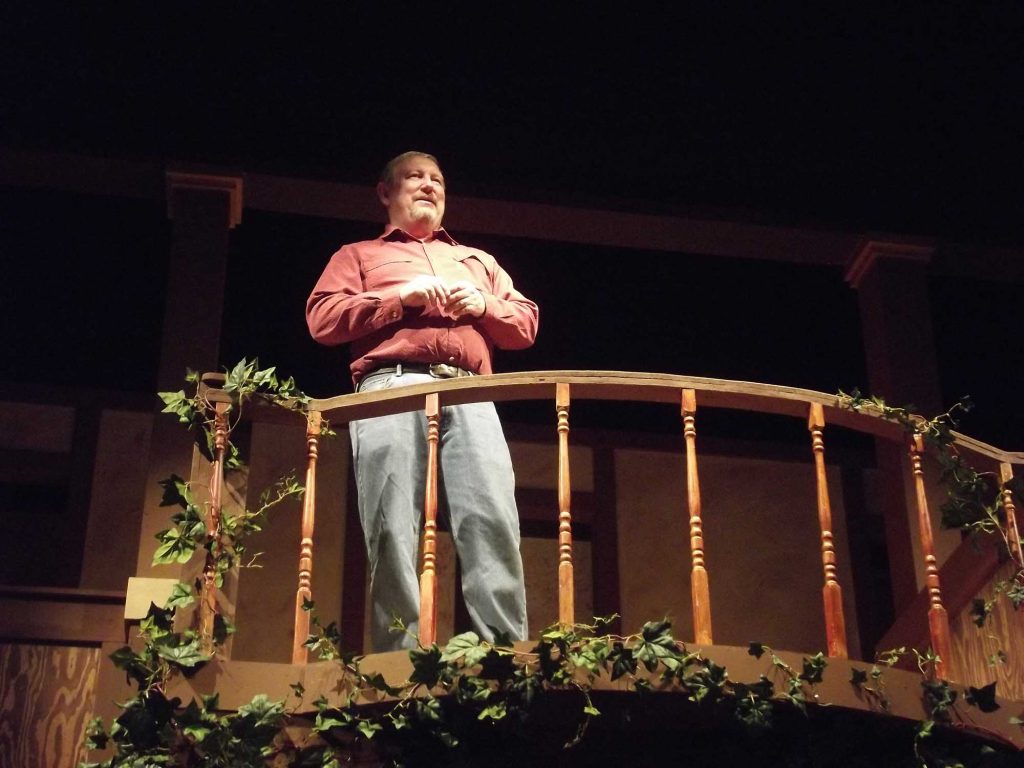Finding solutions to problems is his forte
Fixing problems and finding solutions to difficult problems is what Grady McEvoy loves to do and his job as stage technician gives him plenty of opportunities to do so. After working in theatre for 25 years at the USU Eastern theater department, McEvoy is taking advantage of early retirement options and focusing on taking life one step at a time.

This archived article was written by: Ashley Stilson
Fixing problems and finding solutions to difficult problems is what Grady McEvoy loves to do and his job as stage technician gives him plenty of opportunities to do so. After working in theatre for 25 years at the USU Eastern theater department, McEvoy is taking advantage of early retirement options and focusing on taking life one step at a time.
McEvoy came to USU Eastern from Snow College after applying for an open position in the theater program. After finishing a BFA at Utah State University, he was asked to come to USU Eastern and begin to build the base of a stage-design program. “I majored in technical theater overall,” he said. “My abilities are more in construction and problem solving. Designing [sets] just comes as part of the business for me…what I was building was a technical program so that students could transfer from here.” For the last 25 years, they’ve had a very strong transfer program.
“When I actually started college, I was training to be a professional singer,” McEvoy relates. At USU Eastern, he has been in charge of taking care of the technical aspect of theater, such as lighting, constructing sets, and working the box office, among other things. “There’s a certain skill set that I just have, natural instinct that lends itself to do this type of work…I always found it very interesting how to solve problems, make something work that nobody else could…but the funniest part is finding solutions to make things work that people don’t think can happen.”
His favorite aspect in the technicalities of theater is lighting design. “I don’t necessarily want to run everything…If I just had to focus on one thing, it might just be lighting design.” But after lighting design, his next favorite thing to do is construction and designing sets. “What makes a set design work,” McEvoy says, “Is its ability to help tell the story, to help the actors. You create an environment for the actors to tell the story…What really makes a good design, you have to bring all the elements together…a good set design will always compliment and help the actors tell the story.”
McEvoy fondly remembers his past favorite set designs. One was recently performed “Romeo and Juliet”. “The great thing that I liked about it is it’s a nice two-level set,” McEvoy says. He points out that two of the balconies were designed to represent two different families in the play. One of the balconies is curved and the other is a straight angle. The center balcony unites the design just as the two lovers in the play unite the story.
Another favorite set design was “Something’s Afoot”, a murder mystery spoof on Agatha Christie. Having performed in it several times, McEvoy has a liking for the play. “What I loved about it is there were so many little technical things in it, like the smoking telephone that gasses the doctor…the shrunken Indian head that kills the colonel with a dart and the record player which comes out of the wall. You have to create all these little details.”
Hundreds of hours go into creating the perfect atmosphere for a play, and as soon as one play ends, construction for the next begins immediately. “The biggest stress always comes in the end,” McEvoy mentions. “Pulling it all together in the end. Because I have to spread my time between so many different elements…the most stress for me is doing things outside of designing and building the set.” The budget for making a stage usually ranges from $600 to $2,000, depending on if they reuse sets or not.
McEvoy’s future plans are to stay at USU Eastern through June to do a little more recruiting for the theater program, finishing summer commitments to community groups and fulfilling his position as a Price City Councilmember through December. He then is planning on moving to South Carolina to be with his wife who moved there earlier in the year.
“My favorite thing about [USU Eastern] is just the ability to get to know the students so well,” McEvoy says. “My favorite memories are some of our best shows, but what comes out of even the best shows, what makes them so good is because you end up with this comradely of people who in four to six weeks have created a family that pull together to make an event for an audience. It’s just a fabulous process to be a part of.”
McEvoy wishes to take credit for the success of his students, but he knows that he is just a stepping-stone to their transition. “It’s always been good to get to know [the students] and enjoy watching them grow and turn into professionals. I really enjoy that.”




